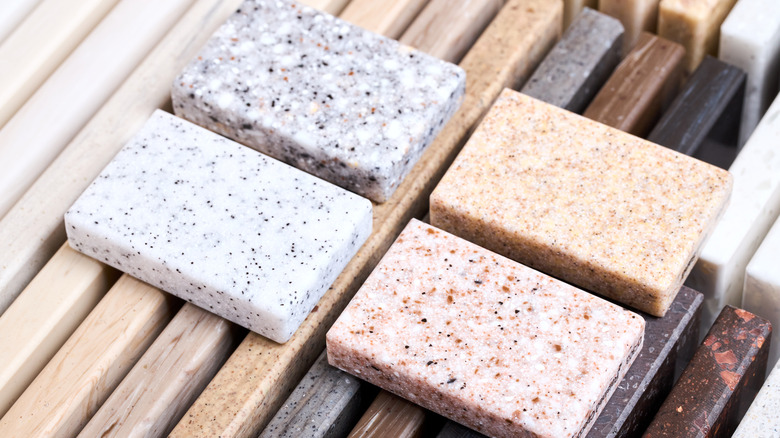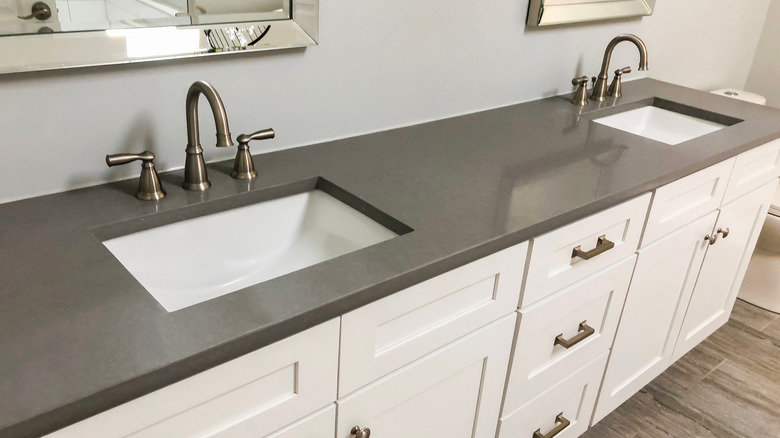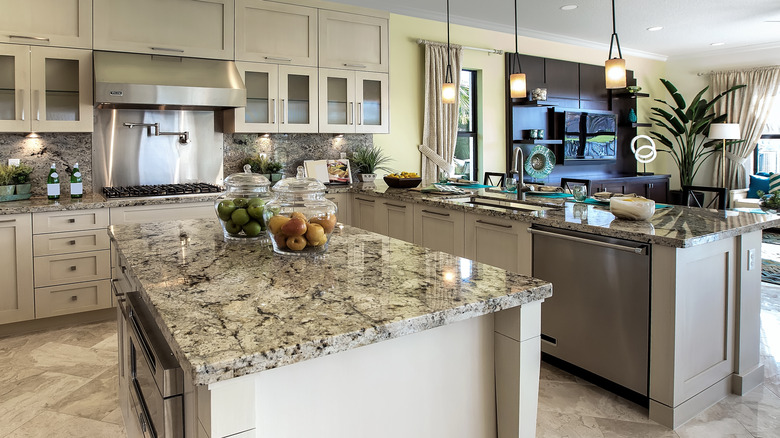Granite Vs Limestone: Which Is The Better Countertop Option?
The material you choose for your countertop makes all the difference, whether it's for your kitchen or bathroom. Ideally, you're probably looking for something durable that can stand up to daily use with little damage. Maintenance requirements are also worth considering, as some natural stones require excessive care to preserve their appearance. Similarly, you should also consider the aesthetic element, as your natural stone of choice should mesh with your home's overall design. And, of course, cost is always a factor.
Granite and limestone are two common countertop materials you should know, but which is the better option? While granite is more popular, likely because of its durability, limestone certainly has its benefits. For one thing, it's usually a less expensive countertop option.
Which of these natural stones you should pick depends on you, your lifestyle, and what your home requires. Let's compare the two options so you can make an informed decision and choose the material that will not only work best in your space but also meet your needs.
Limestone is an underdog countertop option
Limestone may not be as popular as granite for kitchen and bathroom counters, but that doesn't automatically make it a bad choice. One of its major benefits is that it's heat-resistant, making it a great kitchen option since it won't discolor when exposed to high temperatures. (That said, you probably shouldn't leave a hot baking sheet or pan directly on your counter for an extended period.) Limestone also tends to be a bit cheaper than granite, costing about $70 per square foot. This material is available in a variety of neutral colors, as well as some bolder options like red and blue. This range ensures you'll be able to find a color that perfectly matches your kitchen or bathroom's style.
On the other hand, one of limestone's major drawbacks is its porousness; when compared to granite, it's more susceptible to staining and discoloration. If you choose this countertop, watch out for spilled liquids — especially acidic ones — and clean them quickly. You also have to be mindful of the cleaning products you use on this stone. Mild soap and water or a cleaner made specifically for limestone are best. (If you're curious, here are some other tips for keeping your natural stone countertop looking its best.) Since limestone is so porous, you should seal it annually, as this can help prevent discoloration. It's also a softer stone that scratches fairly easily, so be cautious about sliding objects across its surface.
Granite is a popular countertop go-to
Granite is one of the most popular countertop options for both kitchens and bathrooms thanks to its durability. As it's both scratch- and heat-resistant, granite can easily stand up to even the most active kitchen. Though we don't suggest leaving hot objects on your granite counters, placing one down momentarily won't produce any discoloration. Granite also comes in similar colors to limestone: neutrals like black, gray, white, and brown, as well as vibrant colors like blue and green.
Granite is also naturally porous and, similar to limestone, should be sealed annually. Applying a stone sealant like Stoneguard will prevent liquids from discoloring your countertop from the inside. In between sealant applications, clean the surface regularly with mild soap and water.
Worth noting is that granite is harder than limestone. This means it's less likely to chip or scratch, so it's a great option for busy households. Unfortunately, cost is one of its major drawbacks. While granite isn't the most expensive stone you could use for your countertop, it's often significantly more expensive than limestone — on average, it can be anywhere from $80 to $180 per square foot.
So, what's the better choice for your countertop? If you're building or renovating on a budget, limestone offers a better price. If durability is a top concern, however, granite is a better bet.


